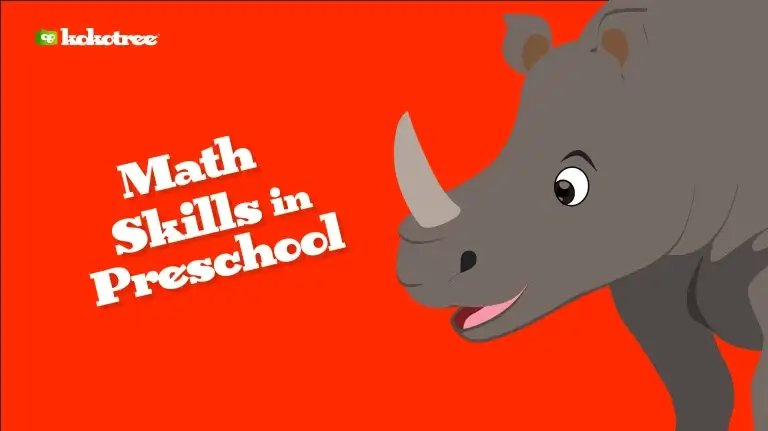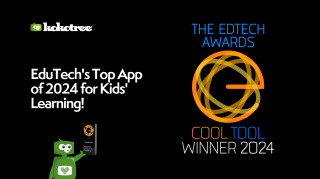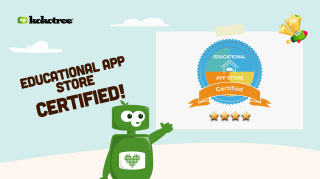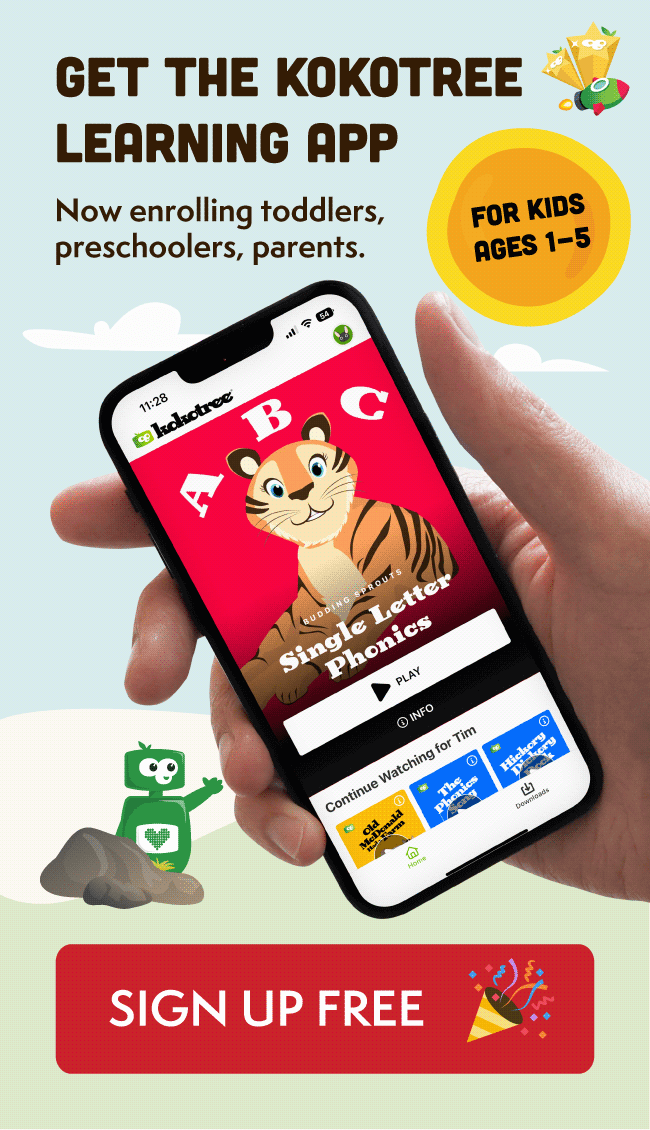

The most crucial preschool math skills kids should learn include counting, shapes, sizes, addition and subtraction, measuring, data, geometry, and comparisons. These skills will help kids learn more about math in the future and give them a strong foundation for success in school.
Some of the most important math skills kids in a preschool curriculum should learn include counting, shapes, and sizes. These skills will help kids learn more about math in the future and give them a strong foundation for success in school.
Summary of preschool math:
Navigating the world of preschool math can be exciting and overwhelming for parents eager to support their child’s educational journey. From understanding basic numbers to grasping early arithmetic concepts, the foundation laid in these early years is crucial. Below, we’ve compiled a list of resources to help you introduce these concepts in a fun and engaging way, ensuring your preschooler not only learns but loves the process.
Number recognition is a fundamental skill that introduces preschoolers to the basics of mathematics. It involves identifying and understanding numbers, a critical step towards building a solid math foundation. Here are resources to enhance number recognition skills:
Mastering basic counting skills is a pivotal part of preschool education, offering a fundamental understanding of numbers and quantities. Through engaging games and activities, toddlers and preschoolers can learn to count in an interactive and fun environment. Here are some resources to help your child develop counting skills:
Shapes and spatial awareness form an integral part of preschool learning, aiding in the development of geometry skills and visual perception. Recognizing and naming different shapes prepares children for more complex math concepts. Below are valuable resources for enhancing these skills:
Understanding size and comparison equips preschoolers with the ability to differentiate objects based on their dimensions and relative attributes. This foundational math skill enhances their descriptive vocabulary and spatial awareness.
Patterns are crucial in developing a child’s ability to predict and understand the structure of mathematics. Recognizing and creating patterns prepare them for complex mathematical concepts.
Sorting and categorizing help children understand the world around them by grouping objects based on similar attributes. This skill is vital for mathematical reasoning and scientific classification.
Introducing preschoolers to basic math operations like addition and subtraction using objects helps them understand mathematical concepts.
Understanding measurement concepts such as length, weight, and volume is crucial for preschoolers, offering them practical knowledge of comparing and quantifying the physical world around them.
Learning about time, days of the week, and months is essential for preschoolers, aiding in their comprehension of temporal concepts and helping them organize their world.
Introducing children to money concepts, including identifying coins and simple money management, is fundamental. It enhances their math skills and begins the journey towards financial literacy.
Worksheets are invaluable tools for reinforcing concepts learned in class or at home. They provide structured practice that helps solidify the understanding of various subjects, including numbers and math operations.
In the early years, children are like sponges, absorbing information and skills that will serve them throughout their lives. A strong start in math prepares them for academic success and helps them develop critical thinking, problem-solving skills, and confidence in navigating the world around them.
Think about it: math is everywhere, from estimating if they have enough allowance for a toy to dividing a pizza amongst friends in their teen years. Ensuring they grasp early math concepts well means setting out with the right tools in their toolbox.
So, what does preschool math encompass? It’s much more than just counting apples or recognizing shapes, although those are vital parts. It goes into understanding patterns, measurements, basic operations, and even logical reasoning. Throughout this guide, we will explore these topics in-depth, offering insights, activities, and tips to make math learning a delightful journey for both you and your child.
The most vital preschool math skills include counting, understanding shapes, sizes, basic arithmetic, measuring, understanding data, diving into geometry, and making comparisons. To foster these skills is to provide a concrete foundation for future academic success.
Building a house starts with a solid foundation, as does a child’s math journey. In preschool, kids grasp key concepts that set the stage for future learning. Simple to us but groundbreaking for them. Here, we’ll break down these core ideas. Ready to explore the building blocks of your child’s mathematical world? Let’s dive in!
Counting might seem like a simple task for adults, but it’s a big step into math for preschoolers. Here’s a breakdown of how this essential skill develops and why it’s crucial.
One-to-one correspondence is a fancy term, but the idea is simple: it means connecting one number to one object. For example, when counting five apples, a child doesn’t just recite “1, 2, 3, 4, 5” – they touch or point to each apple as they count. This skill ensures kids don’t miss or double-count items. It’s foundational for accurate counting.
These real-world scenarios make counting relatable and show kids that math isn’t just a classroom activity – it’s everywhere! Encouraging these moments can make math fun and relevant for your little one.
Introducing shapes and basic geometric concepts to preschoolers is not just about identifying circles or triangles; it’s opening up a world of understanding about how things fit together and relate to each other.
We might take it for granted, but measurement is a huge part of our daily lives. From seeing if a shoe fits to pouring water into a glass, understanding measurement and making comparisons are vital skills.
By incorporating these concepts into their daily lives, children can build a strong foundational understanding of math from an early age.
As young learners start delving into the world of numbers, they begin by understanding how numbers can be played with – added together, taken apart, and even standing alone. These foundational operations pave the way for all math that follows.
Understanding basic operations in these formative years gives children the tools they need to tackle more complex math problems as they grow. It’s not just about numbers, but about understanding how the world around them operates.
Even at a young age, kids possess a surprising capacity to grasp more advanced math concepts than we often give them credit for. With the right tools and guidance, they can start understanding the basics of data handling and patterns. These skills not only enhance their mathematical foundation but also assist in refining their critical thinking and problem-solving abilities.
When we speak of data handling and patterns, especially in the context of preschool children, we are referring to the foundational skills that allow kids to organize, categorize, and make sense of the world around them.
As we see, even advanced topics can be broken down into engaging, age-appropriate activities. When presented as fun games or real-life examples, preschoolers can start building a strong mathematical base that will serve them well in their academic journey.
Every child is a natural-born mathematician. They’re curious, they ask questions, and they love to figure things out. This innate inquisitiveness lays the foundation for mathematical reasoning.
Even in the preschool years, kids are exposed to the concepts of time and money. By introducing them to these ideas in structured ways, we can prepare them for more complex financial and time-management challenges in the future.
Math skills can be cultivated and strengthened in numerous ways outside of the classroom. From hands-on activities and incorporating math into everyday tasks, to utilizing the advantages of technology, there are myriad strategies parents can employ. Let’s dive in.
Hands-on math activities provide children with tangible experiences that make abstract concepts more concrete. Using everyday objects as teaching tools, these activities not only foster understanding but also promote active engagement and tactile learning.
Everyday routines, from cooking to shopping, are brimming with math lessons waiting to be explored. Seizing these daily moments to incorporate mathematical thinking can make learning both practical and relevant, seamlessly blending education with routine.
In our digital age, technology offers dynamic, interactive platforms that can captivate a child’s interest in math. While traditional methods have their place, educational apps and videos can present math in fresh, engaging ways, catering to the tech-savvy generation.
By integrating these strategies, parents can provide a rich mathematical environment, turning everyday moments into potent learning experiences.
Setting the stage for a preschooler’s mathematical journey is akin to laying down the tracks for an exciting train ride of discovery. Proper structuring ensures the journey is smooth, captivating, and rich in learning experiences.
Whether you’re a parent, guardian, or teacher, understanding how to effectively plan lessons and curate the right materials can make a world of difference in a child’s early math education.
This section delves into tailoring lesson plans, selecting essential materials, and harnessing the power of group activities to create an enriching learning atmosphere.
Planning is pivotal to create an effective math learning environment for preschoolers. But how does one achieve the right balance between structure and spontaneity?
A treasure trove of tools can make math vibrant and interactive for little learners. Here’s what you might consider gathering:
Learning math doesn’t always have to be a solo affair. Engaging with peers can enrich the experience.
As a parent, your role in your child’s education is invaluable. While teachers lay the foundation, your support, encouragement, and engagement bridge the gap between classroom learning and real-world application. This section aims to guide you in fostering a love for math, addressing challenges your child might face, and collaborating effectively with educators to ensure holistic development.
Every child’s attitude towards math is often influenced by their earliest exposures. Parents play a pivotal role in ensuring these exposures are positive. Begin by introducing math as a fun and exciting adventure, not just a subject. Share stories that highlight the beauty of numbers, play math-oriented games and celebrate small victories. Avoid labeling math as ‘hard’ or ‘boring’. Instead, infuse excitement and curiosity into every math moment.
Every child will face challenges in their learning journey. As a parent, your role is not to eliminate these hurdles, but to provide the tools to jump over them. When your child struggles, don’t rush to provide answers. Instead, guide them to find solutions, encouraging persistence and resilience. Celebrate their effort more than their correctness. And remember, it’s okay for them to make mistakes; it’s an integral part of the learning process.
Your child’s math journey isn’t one they walk alone; teachers and caregivers are vital co-travelers. Regularly communicate with them about your child’s progress, strengths, and areas needing attention. Attend parent-teacher meetings, be open to feedback, and together, create a supportive environment for your little learner.
For many, the word “math” may evoke memories of rigorous equations and challenging problems. However, for our curious preschoolers, math can be a delightful exploration into the world of numbers, shapes, and patterns. With the right activities, math transcends from mere numbers on paper to a colorful, hands-on adventure. In this realm of early childhood learning, it’s not about finding the quickest solution, but rather about the journey of discovery, understanding, and most importantly, fun.
Dive into a world where numbers and fun go hand-in-hand. Explore diverse math activities for preschoolers that help in nurturing their innate curiosity. From counting colorful beads to arranging toys based on their sizes, the possibilities are endless.
When preschool ends, VPK (Voluntary Prekindergarten) math begins. Prepare your little one for this transition by focusing on specialized math skills that schools expect them to master before stepping into kindergarten.
Get ready to turn everyday situations into preschool math activities. Whether it’s baking where they measure ingredients (a fun math lesson for preschoolers) or a trip to the park counting how many dogs they see, learning is everywhere.
When it comes to math lesson plans for 4-year-olds, customization is key. By integrating their interests into the curriculum and drawing from a mix of pre-k math activities, educators can keep the young minds engaged and eager.
Introduce your child to preschool math crafts. These activities blend artistic creativity with foundational math concepts. Think: geometric pattern art or a DIY bead-abacus kit.
Organized play dates or school settings provide ample opportunities for math small group activities for preschoolers. Through collaboration and teamwork, children not only learn mathematical concepts but also vital interpersonal skills.
Stock up on essential math materials for preschoolers. While store-bought kits are readily available, don’t underestimate the potential of DIY materials. They can be both cost-effective and tailored to your child’s preferences.
Nature offers a vast expanse of math activities for 3-5-year-olds. From counting pebbles to identifying patterns in leaves, outdoor environments are rich with pre-k math lesson plans waiting to be explored.
While traditional math activities for preschoolers lesson plans remain irreplaceable, the digital world offers some valuable additions. Embrace educational videos, apps, and platforms that cater specifically to preschool math, but remember to set boundaries for screen time.
The transition from preschool to kindergarten marks a significant milestone in a child’s academic journey. While the playful learning of preschool continues, kindergarten introduces a more structured approach, especially in math. Here, we’ll delve into the essential math skills your child should be familiar with as they make this transition and strategies to ensure they’re not just prepared but excited for the next phase of their learning journey.
As preschool ends, it’s crucial to ensure your child is primed for the more structured world of kindergarten math. Key skills include a solid understanding of numbers up to 10, recognizing basic shapes, and having a good grasp of one-to-one correspondence. Also, fostering skills like patiently waiting one’s turn, listening to instructions, and cooperating in group settings will give them a head start.
While foundational math skills are vital, readiness also involves building confidence and independence. Encourage tasks that require following multi-step instructions or problem-solving. Use everyday situations, like setting the table, to integrate math concepts. Consider enrolling them in a pre-kindergarten program or math camp to acclimate them to a more structured learning environment. Remember, the goal isn’t just to equip them with knowledge but also to instill a love for learning.
Navigating the world of preschool math might seem daunting at first glance, but remember, this foundation is just the beginning of a lifelong learning journey.
Instilling a robust mathematical foundation in the early years can have ripple effects throughout your child’s life. Beyond academic achievements, these foundational skills foster problem-solving capabilities, logical reasoning, and the confidence to tackle challenges in various life scenarios.
As your child progresses through their academic journey, your role as a parent evolves. It’s essential to continue educating yourself, adapting to their changing needs, and staying engaged. By growing with your child, you’re ensuring they always have the support they need, every step of the way.




